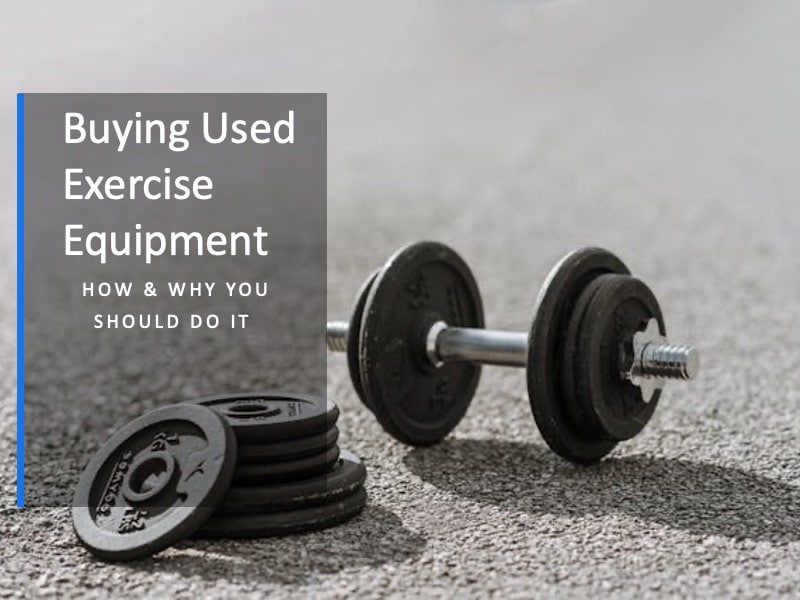Buying Used Exercise Equipment – How & Why You Should Do it
Setting up a home gym can be expensive, but buying used exercise equipment is one of the best ways to get high-quality fitness gear without overspending.
While I personally bought mostly new or discounted home gym equipment, I’ve spent years watching the second-hand fitness equipment market—especially on Facebook Marketplace—and I can confidently say that there are incredible deals available.
Whether you’re looking for treadmills, dumbbells, squat racks, or kettlebells, purchasing used can help you build a fully equipped home gym at a fraction of the cost.
Aside from the financial savings, used fitness equipment is often built to last, especially if you’re buying commercial-grade machines or free weights.
Many people purchase high-end workout gear with great intentions but barely use it, meaning you can find second-hand equipment in near-new condition.
Plus, opting for pre-owned gym equipment is a sustainable choice that reduces waste and minimizes the environmental impact of manufacturing new products.
If you’re unsure about where to buy used exercise equipment, how to inspect it, or what types of fitness gear hold their value best, this guide will walk you through everything you need to know.
Read below to learn the best strategies for finding, evaluating, and purchasing second-hand gym equipment so you can save money while getting the best gear for your workouts.
Benefits of Buying Used Exercise Equipment
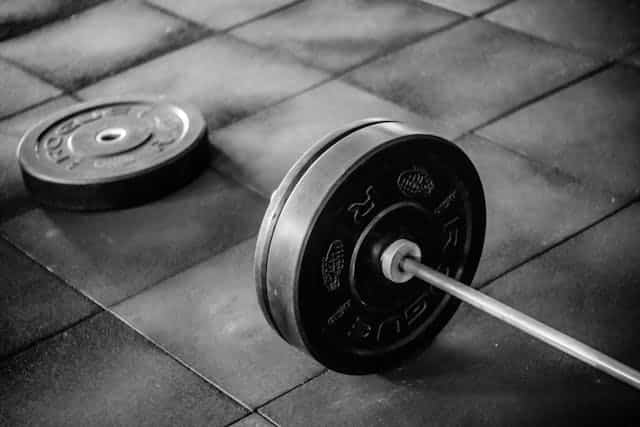
Investing in used exercise equipment is a smart way to set up a home gym without stretching your budget.
While brand-new fitness gear can be costly, buying second-hand allows you to get high-quality treadmills, adjustable dumbbells, squat racks, and other gym essentials at a fraction of the price.
Beyond cost savings, used fitness equipment often includes commercial-grade machines and durable strength training gear that outlasts many budget-friendly new options.
Many people sell lightly used or even like-new gym equipment, meaning you can score top-tier brands for significantly less.
Plus, choosing second-hand fitness gear is an eco-friendly choice, reducing landfill waste and the demand for new production.
If you’re considering outfitting your home gym, here are the biggest advantages of buying used exercise equipment and why it might be the perfect choice for you.
Significant Cost Savings
One of the biggest advantages of buying used fitness equipment is the lower price.
High-quality gym machines and strength training gear often sell at a fraction of their original retail cost, making it easier to equip your home gym without breaking the bank.
Eco-Friendly and Sustainable
Opting for used exercise equipment helps reduce landfill waste and minimizes the carbon footprint associated with manufacturing new products.
By extending the life cycle of fitness gear, you contribute to a more sustainable environment while still achieving your workout goals.
Access to Commercial-Grade Quality
Many second-hand fitness products, such as ellipticals, weight benches, and rowing machines, come from commercial gyms or athletes upgrading their gear.
Buying used fitness equipment allows you to access top-tier brands like Precor, Life Fitness, and Rogue at significantly reduced prices.
Slower Depreciation and Better Resale Value
New treadmills, exercise bikes, and free weights depreciate quickly.
Purchasing used exercise equipment means you avoid the initial depreciation hit, allowing you to retain better resale value if you decide to upgrade or resell in the future.
Unique and Hard-to-Find Equipment
Shopping for used fitness equipment opens the door to unique finds, including discontinued models, vintage weights, and specialty workout machines that are no longer available in stores.
This is especially useful for collectors and athletes looking for niche training tools.
Supporting Local Sellers & Small Businesses
Many used gym products are sold by independent resellers, small businesses, or individuals clearing out home gyms.
Buying used exercise equipment locally helps support small businesses and promotes the circular economy.
Less Packaging Waste and Environmental Impact
Unlike brand-new gym gear, second-hand purchases come with minimal or no packaging, reducing plastic waste and unnecessary cardboard disposal.
This makes buying used fitness equipment an environmentally responsible choice.
Ethical and Responsible Consumerism
Choosing used fitness equipment helps reduce the demand for mass production and supports a more ethical supply chain.
Many large manufacturers rely on exploitative labor practices, but by purchasing second-hand, you contribute to reducing unnecessary consumption and waste.
Where to Buy Used Exercise Equipment
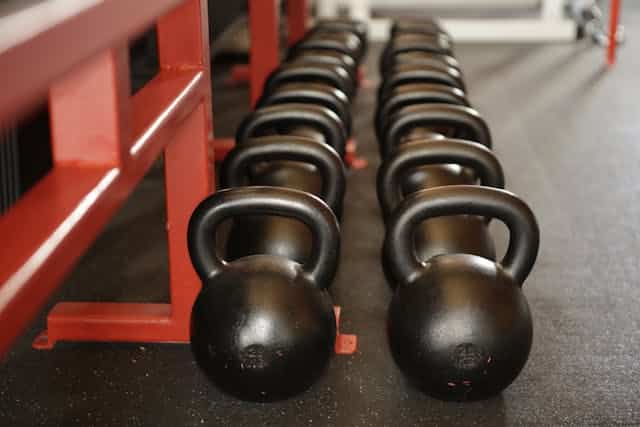
You can buy used exercise equipment from a variety of sources, both online and in-person. Here are some of the best options:
Online Marketplaces
- Facebook Marketplace – One of the best places to find local used exercise equipment at competitive prices. You can negotiate with sellers and often find lightly used gear.
- Craigslist – A great platform for finding local deals on used fitness equipment, though you should be cautious and meet in safe locations.
- eBay – Offers a wide range of used exercise equipment, often with bidding options. Some listings even include shipping.
- OfferUp – Local selling app where you can browse and negotiate prices directly with sellers.
- Nextdoor – A neighborhood-focused app where locals list items for sale, including fitness gear.
Specialized Fitness Retailers
- Play It Again Sports – A well-known chain that specializes in buying and selling used sports and fitness equipment.
- Global Fitness – An online retailer that sells refurbished and used gym equipment from top brands.
- Fitness Superstore – Specializes in used and refurbished commercial gym equipment.
- Primo Fitness – Offers a variety of pre-owned commercial-grade fitness equipment.
- Gym Pros – Sells used and refurbished cardio machines, weights, and strength training equipment.
Local Gyms & Fitness Centers
- Commercial Gyms Closing or Upgrading – Many gyms sell used equipment when they upgrade or close. Check with local gyms to see if they’re selling.
- Hotel Fitness Centers – Hotels frequently upgrade their gym equipment and sell older models at discounted prices.
- University & School Fitness Centers – Colleges, universities, and high schools may sell old fitness equipment when they replace it.
Thrift Stores & Warehouse Sales
- Goodwill & Salvation Army – Some locations carry used weights, treadmills, and other fitness equipment.
- Habitat for Humanity ReStores – Occasionally stock exercise equipment, especially large items like ellipticals or stationary bikes.
Garage Sales & Estate Sales
- Local Yard Sales – Homeowners often sell unused fitness gear at very low prices.
- Estate Sales – A great place to find high-end fitness equipment that has been well-maintained.
Refurbished & Wholesale Suppliers
- Titan Fitness Blemished & Open Box Sales – Some brands, like Titan Fitness, sell discounted returned or slightly damaged products.
- Rogue Fitness Closeouts – Occasionally offers used or returned strength training equipment.
Best Types of Used Fitness Equipment to Buy
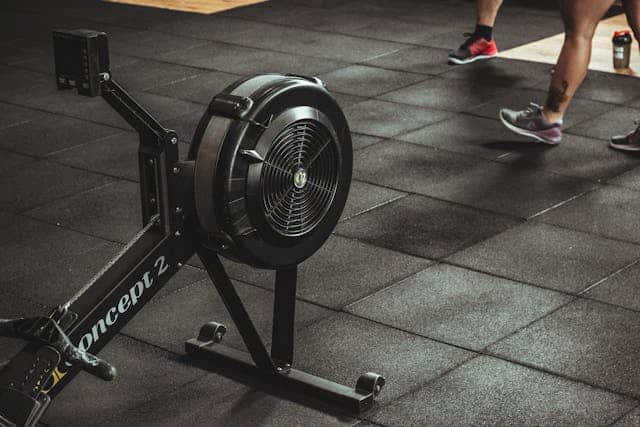
When buying used exercise equipment, some items offer better value, durability, and reliability than others. Here are the best types of used fitness equipment to consider:
Free Weights & Strength Training Equipment
- Dumbbells – Cast iron, rubber-coated, or hex dumbbells hold up well over time and can be significantly cheaper used.
- Barbells & Weight Plates – High-quality Olympic bars and plates are durable and often last a lifetime.
- Kettlebells – A solid choice since they are essentially just cast iron and don’t wear out.
- Power Racks & Squat Racks – If structurally sound, a used squat rack or power rack is a great investment.
- Adjustable Benches – Look for benches with minimal wear on padding and solid construction.
- Resistance Bands & Tubes – Some can be found in good condition, but inspect for cracks or loss of elasticity.
Cardio Machines
- Commercial Treadmills – Commercial-grade models (Precor, Life Fitness, NordicTrack, etc.) tend to be more durable than home models.
- Stationary Bikes – Spin bikes (Peloton, Schwinn, Keiser) and air bikes (Assault, Rogue Echo) often last for years with minimal maintenance.
- Rowing Machines – Concept2 rowers are known for their longevity and can be found at great prices used.
- Ellipticals – Some high-quality commercial models hold up well over time, but home-use models may not be worth it.
Functional Training & Bodyweight Equipment
- Pull-Up Bars & Dip Stations – These rarely wear out and can be bought for much less second-hand.
- Medicine Balls & Slam Balls – As long as there are no cracks or leaks, these are great second-hand purchases.
- Battle Ropes – Heavy-duty battle ropes are nearly indestructible and can be bought at a discount.
- Gymnastic Rings & TRX Systems – Look for lightly used sets; straps and handles should be in good shape.
Flooring & Accessories
- Rubber Gym Flooring & Mats – Often available from commercial gyms replacing their flooring.
- Yoga Mats & Blocks – If lightly used and cleaned properly, these can be a good deal.
- Foam Rollers & Massage Tools – As long as they’re in good shape, these can be foam rollers and self-massage tools bought used.
Types of Fitness Equipment to Avoid Buying Used
Some fitness equipment doesn’t age well or isn’t worth buying second-hand due to wear and tear:
- Cheap Home Treadmills – They wear out quickly and often need costly repairs.
- Ellipticals with Electrical Issues – Many consumer-grade ellipticals break down over time.
- Worn-Out Resistance Bands – These can snap and be unsafe.
- Used Shoes & Wearable Gear – Workout shoes, lifting belts, and knee sleeves degrade over time and lose effectiveness.
Tips for Inspecting Second-Hand Fitness Equipment Before Purchasing
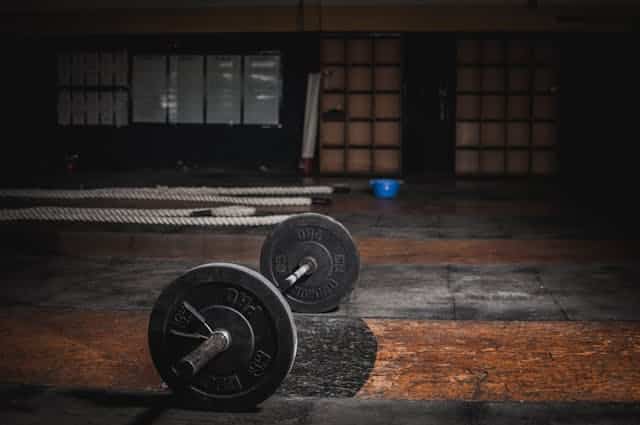
When purchasing used exercise equipment, it’s essential to inspect the item thoroughly to ensure it’s in good condition and worth the investment.
Here are some key tips to help you evaluate second-hand fitness gear before buying:
Check for Structural Integrity
- Weights & Barbells – Look for cracks, rust, or chipped coating. Make sure weight plates have intact inserts and barbells aren’t bent.
- Squat Racks & Benches – Ensure all bolts are tight, the frame is sturdy, and there are no visible weak points in the metal.
- Treadmills & Cardio Machines – Check the frame for wobbling, which could indicate structural damage.
Test Moving Parts & Mechanisms
- Treadmills & Ellipticals – Turn them on and test all speed settings, incline adjustments, and belt movements for smooth operation.
- Rowing Machines – Pull the handle multiple times to test resistance levels and ensure no jerking or lag.
- Spin Bikes & Exercise Bikes – Pedal through different resistance settings, listen for odd noises, and check that the flywheel spins smoothly.
Inspect Electrical Components
- Power-On Test – If buying a used treadmill, elliptical, or rowing machine, plug it in and ensure the display screen, buttons, and settings function properly.
- Check for Error Messages – Many machines display warning codes if there’s an internal issue—look these up online before purchasing.
- Battery-Operated Equipment – If the machine uses batteries for resistance or tracking, verify they work and replacements are available.
Look for Signs of Wear and Tear
- Cables & Pulleys – If buying a cable machine, check for frayed cables or loose pulleys.
- Rubber Coating on Dumbbells & Kettlebells – Avoid equipment with deep cracks or peeling rubber.
- Bench & Machine Padding – Inspect for excessive wear, rips, or flattened padding, which can affect comfort and safety.
Listen for Unusual Noises
- Creaking or Squeaking – This can indicate loose bolts, worn-out bearings, or improper lubrication.
- Grinding Sounds – A bad sign for elliptical machines, treadmills, or rowers, often pointing to motor or belt issues.
Verify Weight Accuracy
- Dumbbells, Barbells, and Plates – Weigh them if possible to ensure they match the stated weight. Some cheaper plates can have discrepancies of several pounds.
Ask About the Equipment’s History
- Previous Usage – Commercial gym equipment is built to last but may have endured heavy use. Home gym equipment often has less wear.
- Reason for Selling – Ask the seller if they are upgrading, downsizing, or getting rid of the item due to a defect.
- Past Repairs – If the equipment has been serviced or repaired, ask for details.
Compare Prices to New Models
- Research the price of the same item brand new to determine if the used version is a good deal. Some discounts aren’t worth it if the equipment is in poor condition.
Ensure Compatibility with Your Space
- Measure Your Space – Make sure the equipment will fit in your home gym.
- Check Power Requirements – Some commercial-grade machines require a dedicated circuit or higher voltage outlets.
Negotiate & Get the Best Deal
- Bundle Items – If you’re buying multiple pieces of used fitness equipment, ask for a bulk discount.
- Point Out Defects – Use minor issues like small scratches or cosmetic wear to negotiate a lower price.
Final Thoughts: Should You Buy Used Exercise Equipment?
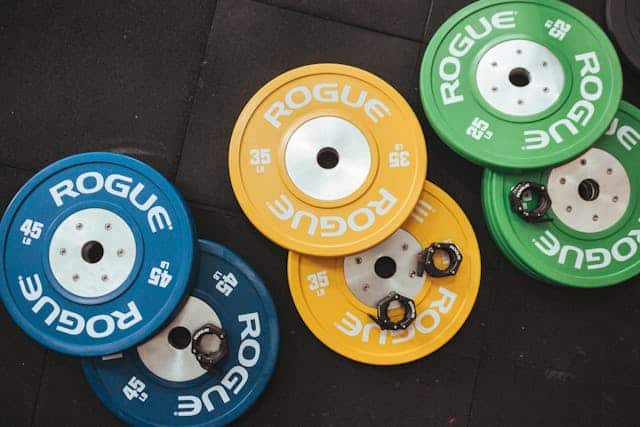
If you’re looking to build a home gym on a budget, buying used exercise equipment is a fantastic way to get high-quality fitness gear at a significantly lower price.
Whether you’re searching for dumbbells, squat racks, treadmills, or resistance bands, the second-hand market is full of great deals—many on barely used or commercial-grade equipment that can last for years.
That said, buying used requires careful inspection and research to ensure you’re getting equipment in good condition.
Checking for structural integrity, testing moving parts, and verifying that machines function properly can save you from costly repairs down the road.
Additionally, platforms like Facebook Marketplace, Craigslist, and Play It Again Sports offer excellent opportunities to find reliable used fitness gear.
While I personally opted for mostly new or discounted home gym equipment, I’ve watched the second-hand market closely, and I know that buying used exercise equipment can be a smart, cost-effective choice—especially if you’re patient and know what to look for.
If you’re ready to save money and get top-tier fitness equipment for your workouts, buying used might be the perfect option for you.

